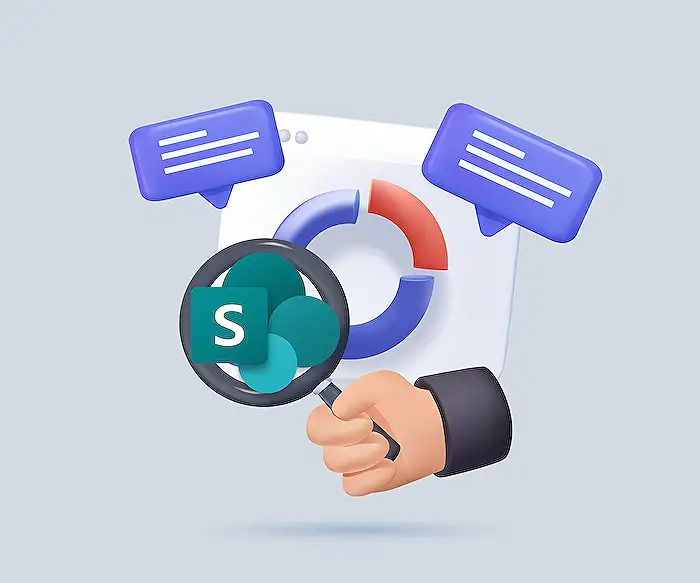SharePoint: Productivity with Quick Steps in an Hour
SharePoint, Teams, Power Hour, IW Mentor, newsletter, vote topic, free course, chat in Teams, Wednesday 11am CST
Key insights
- SharePoint Quick Steps are new features that help automate repetitive tasks in Microsoft SharePoint, making it easier for users to manage content and workflows efficiently.
- Custom Workflows allow users to set up automation for tasks like document approvals or notifications directly within SharePoint, reducing manual work and increasing productivity.
- Efficiency is improved by using Quick Steps, as automation saves time and lets users focus on more important work instead of routine processes.
- Consistency is achieved because automated steps ensure tasks are done the same way every time, which helps reduce errors and improve quality.
- User-Friendly Interface makes it possible for people without technical skills to create and manage workflows easily, supporting a low-code approach to automation.
- The Integration of Quick Steps with other Microsoft tools such as Teams supports better collaboration across platforms and works well in both cloud and hybrid environments.
Introduction to SharePoint Quick Steps: A Power Hour Overview
The latest episode in the ongoing "Power Hour: SharePoint" series, presented by Laura Rogers [MVP], brings attention to a significant feature within Microsoft SharePoint—Quick Steps. Designed to enhance productivity, these tools are part of SharePoint’s push to streamline workflows and automate repetitive tasks. As organizations increasingly seek ways to manage content more efficiently, Quick Steps represent a natural evolution in the platform’s capabilities.
With a focus on automating common processes, Quick Steps help SharePoint users save time and minimize manual work. This newsworthy development signals Microsoft’s ongoing commitment to boosting collaboration and user experience within its ecosystem.
Understanding SharePoint Quick Steps Technology
At its core, SharePoint Quick Steps are pre-defined workflows that automate recurring actions, such as document approvals or data updates. Unlike traditional automation—which often requires advanced knowledge or third-party tools—Quick Steps are designed to be accessible directly from the SharePoint interface.
This democratizes workflow creation, allowing everyday users to implement automation without needing specialized programming skills. The technology’s main goal is to remove barriers to automation, making it possible for teams to respond quickly to changing business needs.
Advantages and Tradeoffs of Quick Steps
There are several clear benefits to adopting SharePoint Quick Steps. First, automation leads to greater efficiency, allowing teams to focus on more strategic work by reducing time spent on routine tasks. Furthermore, Quick Steps promote consistency, as automated workflows ensure that processes are followed the same way every time, reducing the risk of errors.
Another major advantage is flexibility. Users can tailor Quick Steps to fit their specific requirements, adapting workflows as organizational needs evolve. Moreover, the seamless integration with other Microsoft tools, such as Teams, fosters improved collaboration across departments. However, there is a tradeoff: while Quick Steps simplify many tasks, extremely complex workflows may still require custom solutions or developer involvement, which could limit their usefulness for advanced scenarios.
How Quick Steps Work in Practice
Implementing Quick Steps begins with creating custom workflows that automate tasks like notifications or document status updates. The process is straightforward, with an intuitive interface that guides users through the setup steps. This accessibility is especially valuable for businesses that lack dedicated IT resources but still want to benefit from automation.
Additionally, Quick Steps are designed to work with existing SharePoint features like lists and document libraries. This compatibility makes it easy to apply automation to established processes without requiring major changes or migrations. As a result, organizations can boost productivity with minimal disruption.
Innovative Aspects and Future Potential
The introduction of Quick Steps marks a notable shift toward low-code automation within SharePoint. This approach opens up automation to a broader audience, empowering non-technical users to enhance workflows with little or no coding. By simplifying automation, Quick Steps align with industry trends favoring user-friendly, adaptable solutions.
Furthermore, Quick Steps support both on-premises and cloud-based SharePoint environments, making them suitable for hybrid workplaces. The enhanced integration with other Microsoft tools also ensures that organizations can foster smoother collaboration, regardless of team location. However, as with any new technology, some challenges remain. Balancing ease of use with the need for advanced functionality may require ongoing refinement as organizations push the boundaries of what Quick Steps can achieve.
Conclusion: A Step Forward in Productivity
Overall, SharePoint Quick Steps reflect Microsoft’s dedication to improving user experience and boosting productivity through intelligent automation. By lowering the barriers to workflow creation, these tools make it easier for organizations of all sizes to embrace automation. While there are tradeoffs between simplicity and complexity, the benefits for most users are clear: greater efficiency, consistency, and adaptability within the familiar SharePoint environment.
As businesses continue to seek out solutions that streamline operations and improve collaboration, Quick Steps are poised to play a key role in the future of digital workplace productivity.

Keywords
Power Hour SharePoint tips SharePoint quick steps SharePoint tutorial SharePoint productivity SharePoint workflow automation Microsoft SharePoint guide Office 365 SharePoint features
